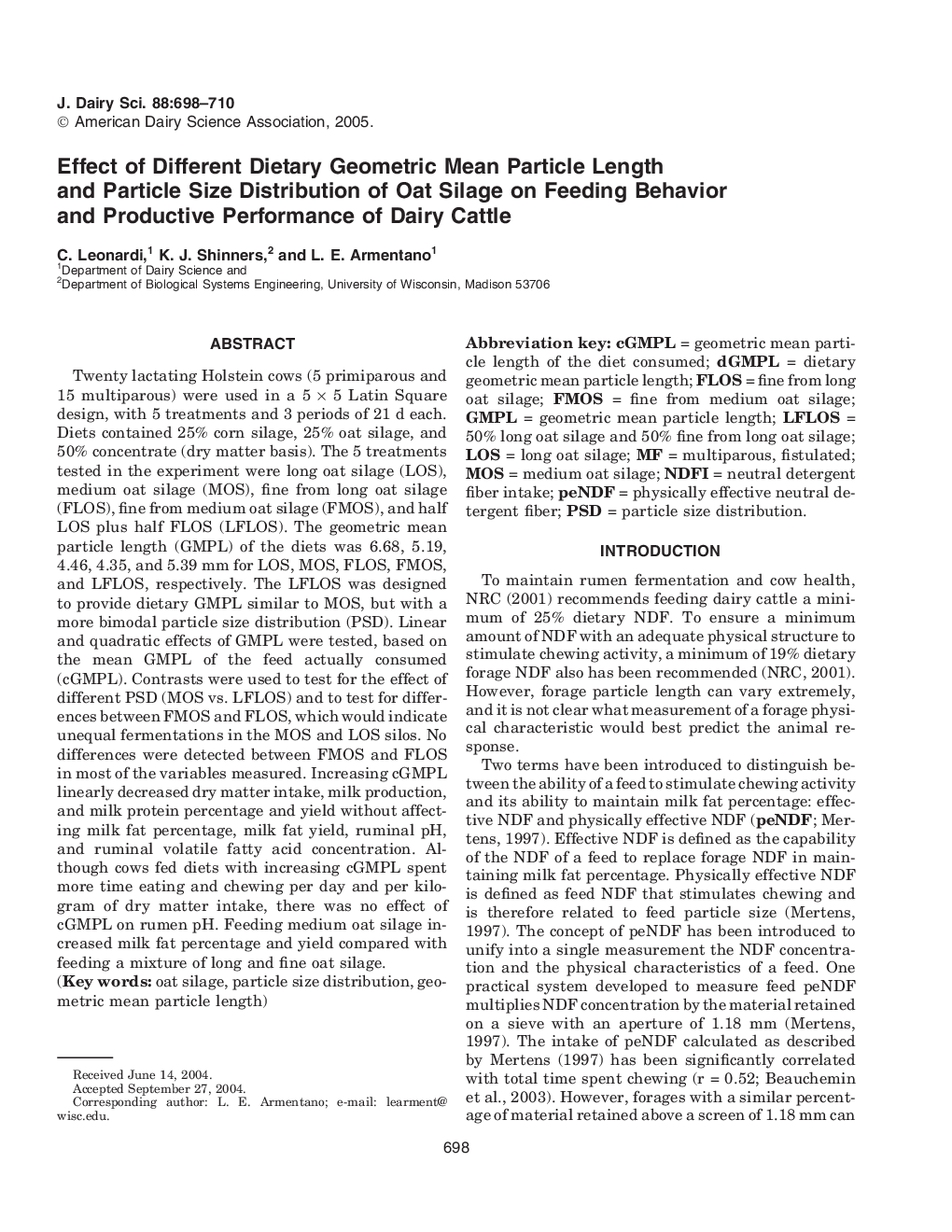| Article ID | Journal | Published Year | Pages | File Type |
|---|---|---|---|---|
| 8981191 | Journal of Dairy Science | 2005 | 13 Pages |
Abstract
Twenty lactating Holstein cows (5 primiparous and 15 multiparous) were used in a 5Â ÃÂ 5 Latin Square design, with 5 treatments and 3 periods of 21 d each. Diets contained 25% corn silage, 25% oat silage, and 50% concentrate (dry matter basis). The 5 treatments tested in the experiment were long oat silage (LOS), medium oat silage (MOS), fine from long oat silage (FLOS), fine from medium oat silage (FMOS), and half LOS plus half FLOS (LFLOS). The geometric mean particle length (GMPL) of the diets was 6.68, 5.19, 4.46, 4.35, and 5.39Â mm for LOS, MOS, FLOS, FMOS, and LFLOS, respectively. The LFLOS was designed to provide dietary GMPL similar to MOS, but with a more bimodal particle size distribution (PSD). Linear and quadratic effects of GMPL were tested, based on the mean GMPL of the feed actually consumed (cGMPL). Contrasts were used to test for the effect of different PSD (MOS vs. LFLOS) and to test for differences between FMOS and FLOS, which would indicate unequal fermentations in the MOS and LOS silos. No differences were detected between FMOS and FLOS in most of the variables measured. Increasing cGMPL linearly decreased dry matter intake, milk production, and milk protein percentage and yield without affecting milk fat percentage, milk fat yield, ruminal pH, and ruminal volatile fatty acid concentration. Although cows fed diets with increasing cGMPL spent more time eating and chewing per day and per kilogram of dry matter intake, there was no effect of cGMPL on rumen pH. Feeding medium oat silage increased milk fat percentage and yield compared with feeding a mixture of long and fine oat silage.
Keywords
Related Topics
Life Sciences
Agricultural and Biological Sciences
Animal Science and Zoology
Authors
C. Leonardi, K.J. Shinners, L.E. Armentano,
